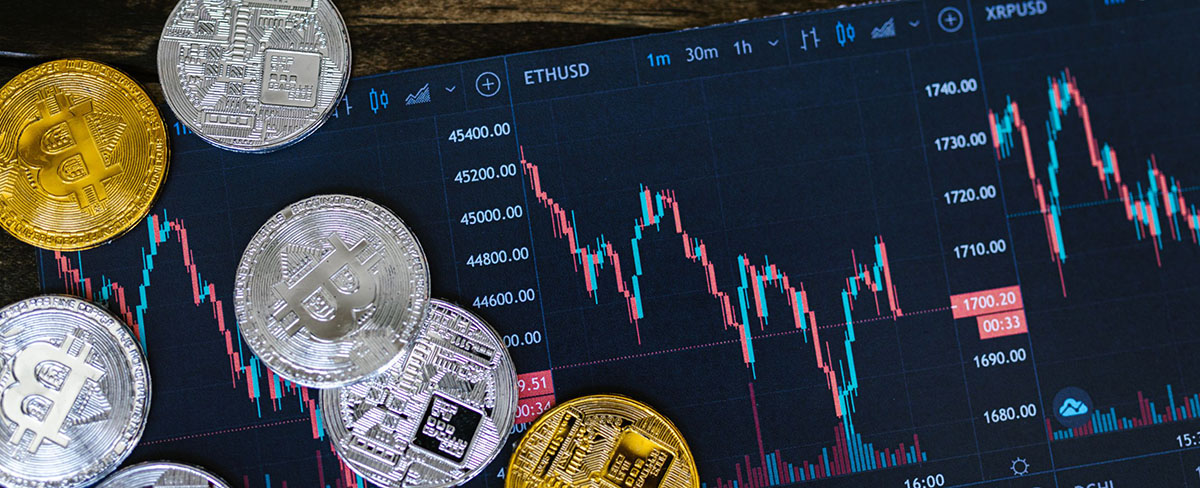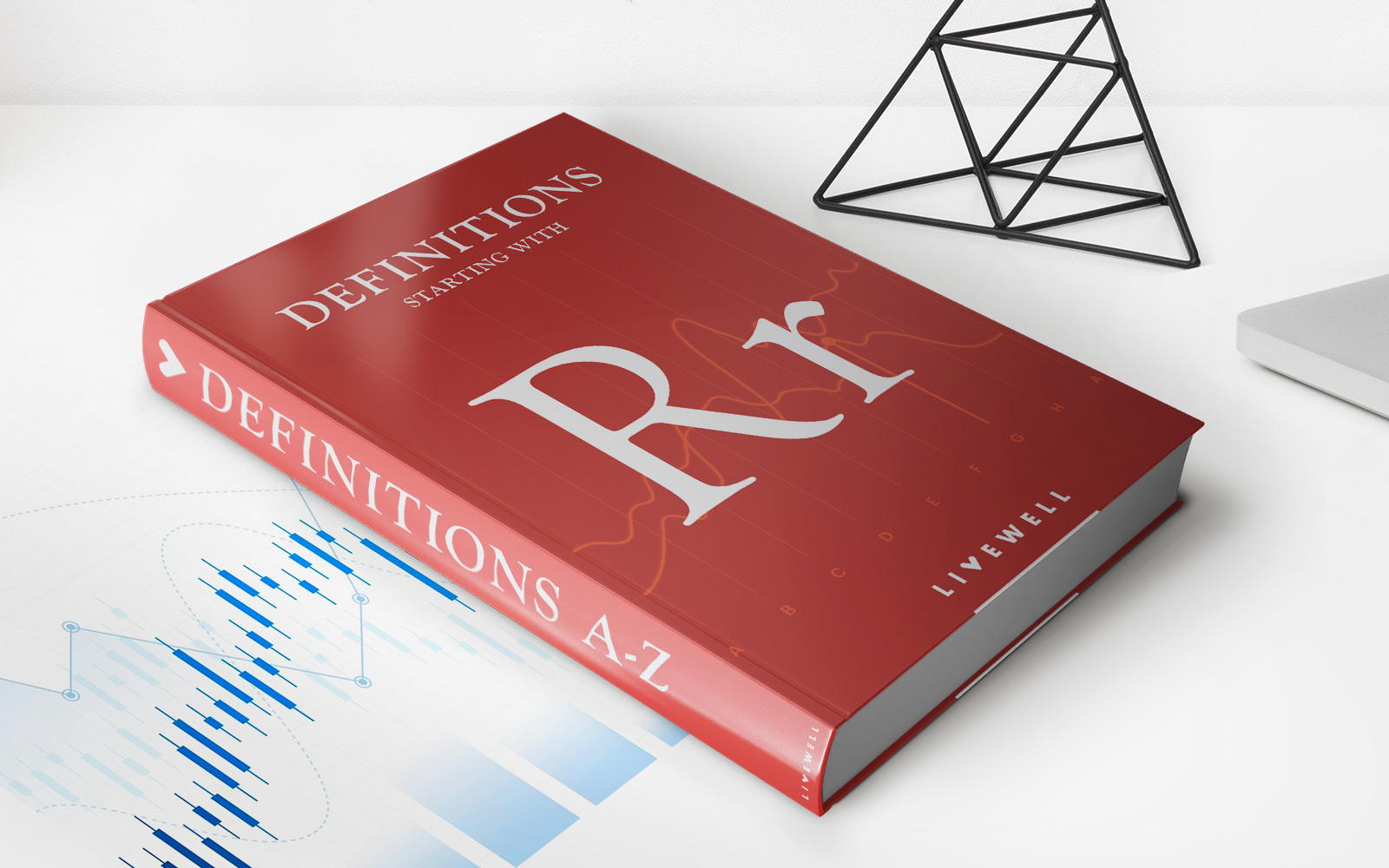

Finance
What Is Circulating Supply In Cryptocurrency
Published: October 5, 2023
Learn about the concept of circulating supply in cryptocurrency and its significance in the world of finance. Gain insights into this essential aspect of the digital currency market.
(Many of the links in this article redirect to a specific reviewed product. Your purchase of these products through affiliate links helps to generate commission for LiveWell, at no extra cost. Learn more)
Table of Contents
- Introduction
- Definition of Circulating Supply
- Importance of Circulating Supply in Cryptocurrency
- Calculation Method for Circulating Supply
- Factors Affecting Circulating Supply
- Potential Issues with Circulating Supply Calculations
- Comparison of Circulating Supply and Total Supply
- Potential Impact of Circulating Supply on Price and Market Cap
- Examples of Circulating Supply in Popular Cryptocurrencies
- Conclusion
Introduction
Welcome to the world of cryptocurrencies, where digital assets are reshaping the way we perceive and interact with money. As the popularity of cryptocurrencies continues to rise, it is essential to understand the various aspects that contribute to their value and market dynamics. One such critical aspect is the concept of circulating supply.
In simple terms, circulating supply refers to the total number of coins or tokens of a specific cryptocurrency that are currently in circulation and available to the public. It is a crucial metric that helps investors and enthusiasts assess the potential value and market cap of a cryptocurrency.
The determination of circulating supply involves several factors, such as the initial supply, token burns, lock-ups, and any newly mined or minted tokens. By understanding circulating supply, investors can evaluate the scarcity and liquidity of a cryptocurrency, which can have a significant impact on its price and market performance.
In this article, we will delve deeper into the concept of circulating supply in cryptocurrency, its calculation methods, the factors that can affect it, and its significance in determining a cryptocurrency’s value and market dynamics. We will also explore potential issues with circulating supply calculations and compare it with the concept of total supply. Additionally, we will provide examples of circulating supply in popular cryptocurrencies to illustrate how it plays a crucial role in the cryptocurrency ecosystem.
So, let’s strap on our virtual seatbelts and embark on a journey to uncover the fascinating world of circulating supply in cryptocurrency.
Definition of Circulating Supply
Circulating supply refers to the total number of coins or tokens of a specific cryptocurrency that are currently in circulation and available for public trading. It represents the portion of the cryptocurrency’s total supply that is actively circulating in the market, excluding any coins or tokens that are locked or held by the project team, founders, or are otherwise inaccessible.
To understand the concept better, let’s take an example. Suppose a cryptocurrency has a total supply of 1 million coins, and out of these, 200,000 coins are held by the project team, advisors, or are locked up. In this case, the circulating supply would be 800,000 coins, representing the amount available to the public for buying, selling, and trading.
The circulating supply of a cryptocurrency plays a crucial role in assessing its market value, market cap, and potential for growth. It is a key metric that investors and traders consider when making investment decisions.
When a cryptocurrency has a small circulating supply, it implies that the coins or tokens may be scarcer and potentially more valuable. Conversely, a large circulating supply suggests that there are plenty of coins available, which could impact the price and market cap of the cryptocurrency.
It is important to note that while circulating supply represents the coins or tokens actively circulating in the market, it does not necessarily mean that all of them are readily available for trading. Some coins may be held by long-term investors or stored in wallets that are not actively participating in trading.
Overall, the definition of circulating supply provides insight into the number of coins or tokens in circulation and available for public trading, enabling investors to evaluate the potential value, scarcity, liquidity, and market dynamics of a given cryptocurrency.
Importance of Circulating Supply in Cryptocurrency
The circulating supply of a cryptocurrency holds significant importance in understanding its value, market dynamics, and investment potential. Let’s explore the key reasons why circulating supply matters in the world of cryptocurrencies:
- Market Value: The circulating supply plays a crucial role in determining the market value of a cryptocurrency. Price is ultimately driven by the supply and demand dynamics of a particular asset. When the circulating supply is limited or scarce, it can create an environment where demand outweighs supply, potentially driving the price of the cryptocurrency upwards. Conversely, a large circulating supply might result in a lower individual token value.
- Market Cap Calculation: The circulating supply is a critical factor in calculating the market capitalization of a cryptocurrency. Market cap is determined by multiplying the current price of the cryptocurrency by its circulating supply. It gives investors and traders an understanding of the overall size and potential of a cryptocurrency in the market. Cryptocurrencies with higher market caps are often considered more established and have a larger investor base, which can impact their liquidity and stability.
- Investment Potential: Circulating supply helps investors evaluate the investment potential of a cryptocurrency. A lower circulating supply can signify scarcity, making the cryptocurrency potentially more valuable in the future if demand increases. On the other hand, a larger circulating supply may indicate a lower potential for significant price increases. By considering the circulating supply along with other factors like the project’s technology, team, and market adoption, investors can make more informed decisions regarding their investment strategies.
- Price Stability: The circulating supply can also impact the price stability of a cryptocurrency. When there is a large amount of circulating supply available, it can lead to higher price volatility as the market is flooded with tokens. Conversely, a limited circulating supply may result in more stable price movements as the market has fewer tokens available for trading.
- Trading Liquidity: Circulating supply also influences the liquidity of a cryptocurrency. Higher circulating supply generally means greater liquidity, as there are more tokens available for buying and selling. This enhances the ease of trading and increases the likelihood of executing trades at desired prices. It also reduces the impact of large buy or sell orders on the token’s price.
Overall, the importance of circulating supply in cryptocurrency lies in its ability to provide insights into market value, investment potential, price stability, market cap calculation, and trading liquidity. By analyzing the circulating supply, investors and traders can make more informed decisions and navigate the complex world of cryptocurrencies more effectively.
Calculation Method for Circulating Supply
The calculation of circulating supply in cryptocurrency involves several factors that need to be taken into account. While the method may vary slightly depending on the specific cryptocurrency and its underlying protocol, here are the key elements typically considered:
- Initial Supply: The initial supply refers to the number of coins or tokens that were created when the cryptocurrency was launched. This represents the starting point for calculating the circulating supply.
- Token Burns: Token burns occur when a portion of the circulating supply is intentionally destroyed or removed from circulation. This can be done to increase scarcity or to provide economic benefits to token holders. Any tokens that have been burned are subtracted from the total circulating supply.
- Lock-ups and Vesting: In some cases, a percentage of the initial supply may be locked or vested for a certain period. These tokens are usually held by the project team, founders, or advisors. During the lock-up or vesting period, these tokens are considered unavailable for public trading and are excluded from the circulating supply.
- Newly Mined or Minted Tokens: For cryptocurrencies that have a proof-of-work or proof-of-stake consensus mechanism, new tokens may be created over time as a reward for miners or validators. These newly created tokens are considered part of the circulating supply as they are introduced into the market.
- Coin Distribution: The distribution of coins or tokens can vary across different wallets or addresses. As such, it is important to identify which wallets or addresses hold the coins that are actively circulating in the market. Coins held by the project team or that are locked up are typically excluded from the circulating supply.
Once these factors are considered, the calculation of the circulating supply is done by subtracting any locked or burned tokens from the total supply and adding any newly minted or mined tokens. This results in the final figure representing the number of coins or tokens that are actively circulating and available for public trading.
It is important to note that calculating the circulating supply is not always straightforward, and different cryptocurrencies may have unique considerations. Therefore, it is advisable to consult reliable sources such as official project websites, blockchain explorers, or reputable data providers for accurate information about a cryptocurrency’s circulating supply.
By understanding the calculation method for circulating supply, investors and enthusiasts can have a clearer picture of how the supply of a cryptocurrency is determined and evaluate its scarcity, liquidity, and potential value in the market.
Factors Affecting Circulating Supply
The circulating supply of a cryptocurrency can be influenced by several factors that impact the availability and movement of coins or tokens in the market. Let’s explore some of the key factors that can affect the circulating supply:
- Token Economics: The token economics of a cryptocurrency, including its issuance model and distribution mechanism, can directly impact the circulating supply. For example, if a cryptocurrency has a fixed maximum supply, the circulating supply will increase only if new tokens are minted or mined, or if existing tokens are burned.
- Token Lock-ups: Some cryptocurrencies implement lock-up periods during which a portion of the circulating supply is restricted from being traded or transferred. This can include tokens held by project founders, team members, or advisors. Until the lock-up period expires, these tokens are not considered part of the circulating supply.
- Burned Tokens: Token burns occur when a certain amount of coins or tokens are deliberately destroyed, reducing the total supply. This can be done to increase scarcity, redistribute value, or align with the project’s tokenomics strategy. Burned tokens are subtracted from the circulating supply.
- Wallet Holdings: The distribution of tokens across different wallets can impact the circulating supply. Coins held in wallets that are not actively trading or participating in the market are not considered part of the circulating supply. Conversely, tokens held in exchange wallets or wallets actively engaged in trading contribute to the circulating supply.
- Locked Stakes: In proof-of-stake (PoS) cryptocurrencies, validators or node operators may be required to lock a certain amount of tokens as collateral to participate in block validation. These locked stakes are temporarily removed from the circulating supply until the lock-up period expires or the tokens are released.
- Token Releases: Some projects have structured token release schedules, where a predetermined amount of tokens is gradually released into the market over time. These scheduled token releases can impact the growth of the circulating supply.
- Minting or Mining: In cryptocurrencies that involve minting or mining, newly created tokens become part of the circulating supply. The rate at which new tokens are minted or mined can affect the growth rate of the circulating supply.
It is important to note that these factors can vary from one cryptocurrency to another depending on their specific tokenomics and project design. Understanding the factors that affect the circulating supply helps investors and traders assess the scarcity, liquidity, and potential value of a cryptocurrency, providing valuable insights for their decision-making process.
Potential Issues with Circulating Supply Calculations
The calculation of circulating supply in cryptocurrencies is not always a straightforward process and can be subject to potential issues and challenges. It is important to be aware of these factors to ensure accurate assessment and interpretation of circulating supply data. Here are some potential issues to consider:
- Data Inaccuracy: Obtaining accurate data regarding the circulating supply of a cryptocurrency can be challenging. The information may come from various sources, including project websites, blockchain explorers, or data aggregators. Discrepancies or inconsistencies in reporting can lead to inaccuracies in calculation.
- Token Distribution: Determining which wallets or addresses hold the circulating coins can be complex, especially if the distribution is fragmented. Identifying and excluding wallets that are not actively trading or participating in the market requires detailed analysis and may not always be accurately reflected in the circulating supply calculations.
- Illiquid Holdings: Some tokens may be held by investors or entities with long-term holding strategies, making them illiquid and unavailable for trading. Despite being part of the circulating supply, these tokens may not actively contribute to the market dynamics.
- Locked Tokens: Tokens that are subject to lock-ups, vesting schedules, or other contractual restrictions can impact the circulating supply calculations. These tokens are temporarily removed from circulation and may become available or inaccessible based on predetermined conditions.
- Burned or Lost Tokens: Token burns or loss of access to some tokens can affect circulating supply calculations. If tokens are mistakenly or purposely destroyed or if users lose access to their tokens, these factors need to be considered in the overall circulating supply analysis.
- Changes in Supply: Cryptocurrencies with dynamic supply mechanisms, such as inflation or deflation, can pose challenges in accurately calculating the circulating supply. Factors such as token minting, mining rewards, or token burns can dynamically impact the circulating supply over time.
- Reporting Transparency: Cryptocurrency projects may vary in their level of transparency when it comes to reporting and disclosure of circulating supply data. Some projects provide comprehensive and up-to-date information, while others may lack transparency, making it difficult to obtain accurate calculation figures.
Despite these potential issues, it is crucial to perform thorough due diligence and research to obtain the most reliable and accurate circulating supply data. Consulting multiple reputable sources and analyzing the project’s official communications can help mitigate any discrepancies or uncertainties in the circulating supply calculations.
By being aware of the potential issues with circulating supply calculations, investors and cryptocurrency enthusiasts can make more informed decisions based on a comprehensive understanding of the supply dynamics and potential limitations associated with the circulating supply figures.
Comparison of Circulating Supply and Total Supply
When analyzing a cryptocurrency, it is important to understand the distinction between circulating supply and total supply. While both supply metrics play a critical role in evaluating a cryptocurrency’s dynamics, they represent different aspects of the token distribution. Let’s compare circulating supply and total supply to gain a better understanding:
Circulating Supply: Circulating supply refers to the total number of coins or tokens of a cryptocurrency that are currently in circulation and available for public trading. It excludes tokens that are locked up, held by the project team, or are otherwise inaccessible. Circulating supply represents the portion of the total supply that is actively being used, traded, or held by the public.
Total Supply: Total supply represents the maximum number of coins or tokens that can ever be created or mined in a cryptocurrency. It includes both the coins in circulation and those that are yet to be released or are reserved for future use. Total supply provides insight into the overall potential quantity of tokens that can exist within the ecosystem.
The key differences between circulating supply and total supply are as follows:
- Inclusion of Locked or Unreleased Tokens: Circulating supply excludes tokens that are not available for public trading, such as those subject to lock-ups, vesting periods, or held by the project team. In contrast, total supply includes all tokens ever created, including those that are locked or yet to be released.
- Representation of Token Availability: Circulating supply reflects the tokens that are actively being used, traded, or held by the public. It provides a more accurate representation of the tokens available for trading and market dynamics. Total supply, on the other hand, reflects the theoretical upper limit of the token quantity but may not portray the actual tokens available in the market.
- Impact on Market Capitalization: Circulating supply is a crucial factor in calculating market capitalization. It forms the basis for determining the market value of a cryptocurrency by multiplying the price per token with the circulating supply. Total supply, while relevant, does not directly impact market capitalization calculations.
- Scarcity and Price Implications: The circulating supply metric helps investors assess the scarcity and liquidity of a cryptocurrency. It can provide a basis for evaluating its potential value and price dynamics. Total supply, while not directly influencing price, can impact market sentiment and future price expectations.
It is important to analyze both circulating supply and total supply when assessing a cryptocurrency. Understanding the circulating supply provides insights into the immediate token availability, market dynamics, and investment potential, whereas total supply gives an overview of the maximum number of tokens that can ever exist. Together, these metrics contribute to a comprehensive understanding of a cryptocurrency’s supply dynamics and future outlook.
Potential Impact of Circulating Supply on Price and Market Cap
The circulating supply of a cryptocurrency can have a significant impact on its price and market capitalization. Here, we explore the potential implications of circulating supply on these key aspects:
- Scarcity and Demand: A limited circulating supply can create a perception of scarcity, leading to increased demand for the cryptocurrency. As the available supply is relatively scarce compared to the demand, investors may be willing to pay higher prices to acquire or hold the tokens. This increased demand, driven by perceived scarcity, can drive the price of the cryptocurrency higher.
- Price Stability: A smaller circulating supply can contribute to price stability, as there may be fewer tokens available for trading. With a limited supply, changes in supply and demand may have a more pronounced impact on price movements. This can result in less volatility, making the cryptocurrency more attractive to investors looking for more stable assets.
- Market Capitalization: The circulating supply plays a critical role in determining the market capitalization of a cryptocurrency. Market cap is calculated by multiplying the price per token by the circulating supply. A lower circulating supply with a higher token price can result in a larger market cap. Cryptocurrencies with larger market caps tend to attract more attention from investors and may be perceived as more established or valuable.
- Liquidity: The circulating supply affects the liquidity of a cryptocurrency. Higher circulating supply generally indicates greater liquidity, as there are more tokens available for buying and selling. Increased liquidity allows for easier and faster execution of trades, reducing the impact of large buy or sell orders on the token’s price. Higher liquidity can attract more traders and investors, contributing to increased market activity and potentially higher prices.
- Perception of Value: The circulating supply can influence investors’ perception of a cryptocurrency’s value. A smaller circulating supply may be perceived as more valuable because of its scarcity. Investors may expect that as the demand for the limited supply increases, the price of the cryptocurrency will rise. This perception can drive buying interest and contribute to price appreciation.
It’s important to note that while circulating supply can impact the price and market cap of a cryptocurrency, these factors are also influenced by other dynamics, such as market sentiment, market demand, project fundamentals, competition, technological advancements, and overall market conditions. Additionally, the specific tokenomics, use case, and underlying technology of the cryptocurrency play significant roles in determining its value.
By considering the impact of circulating supply on price and market cap, investors can gain insights into the potential value and attractiveness of a cryptocurrency. However, it is essential to conduct comprehensive research, evaluate various factors, and not solely rely on the circulating supply alone when making investment decisions.
Examples of Circulating Supply in Popular Cryptocurrencies
Let’s take a look at some examples of circulating supply in popular cryptocurrencies to illustrate how this metric can vary across different projects:
- Bitcoin (BTC): Bitcoin, the first and most well-known cryptocurrency, has a maximum supply of 21 million coins. As of now, more than 18.7 million Bitcoins have been mined and are in circulation. The circulating supply of Bitcoin represents the number of coins available for trading and use in the market.
- Ethereum (ETH): Ethereum, the second-largest cryptocurrency by market capitalization, has a different approach to circulating supply. While Ethereum does not have a maximum supply, it has an annual issuance limit, commonly referred to as the “block reward.” Currently, the circulating supply of Ethereum is around 118 million ETH, excluding locked or reserved tokens.
- Ripple (XRP): Ripple has a maximum supply of 100 billion XRP tokens. However, the circulating supply of XRP is lower, as a significant portion of the tokens are held by Ripple Labs and subject to lock-up agreements. The circulating supply of XRP is regularly adjusted to account for tokens released from escrow accounts for distribution or partnerships.
- Litecoin (LTC): Litecoin has a maximum supply of 84 million coins. As of now, the circulating supply of Litecoin is over 66 million LTC. The remaining coins are expected to be mined through a process called “mining halving,” where the block rewards are reduced by half periodically.
- Cardano (ADA): Cardano follows a unique issuance model where the total supply of ADA coins is fixed at 45 billion. However, the circulating supply is currently lower due to a combination of factors, including tokens locked up for staking, reserved for future development, and held by the Cardano Foundation.
These examples highlight the variation in circulating supply across different cryptocurrencies. Factors such as maximum supply caps, block rewards, token locks, and reserved tokens can significantly influence the circulating supply of a cryptocurrency. It is crucial to analyze the specific tokenomics, project fundamentals, and supply dynamics of each cryptocurrency to gain a comprehensive understanding of its circulating supply.
It is important to note that the circulating supply of cryptocurrencies can change over time due to factors such as token burns, token releases, or changes in token distribution. Therefore, it is advisable to consult reliable sources such as official project websites or data aggregators for the most accurate and up-to-date information on circulating supply.
Conclusion
Circulating supply is an essential metric in the world of cryptocurrencies as it provides valuable insights into the number of coins or tokens actively in circulation and available for trading. Understanding circulating supply is crucial for assessing market value, market capitalization, liquidity, and investment potential in a cryptocurrency.
We explored the definition of circulating supply, its calculation method, and the factors that can affect it. We also discussed the potential impact of circulating supply on price, market capitalization, and market dynamics. By considering the scarcity, demand, price stability, and perception of value associated with circulating supply, investors can make more informed decisions.
However, it is important to acknowledge the potential issues and challenges that may arise with circulating supply calculations, such as data inaccuracies, fragmented distributions, locked or lost tokens, and changes in supply dynamics. Careful research and reliance on reliable sources are crucial to accurately assess and interpret circulating supply data.
We also compared circulating supply with total supply, highlighting their distinct roles and implications in evaluating a cryptocurrency. While circulating supply reflects the tokens actively available for trading, total supply represents the theoretical upper limit of tokens that can exist. Both metrics provide valuable insights into a cryptocurrency’s supply dynamics and future outlook.
Additionally, we provided examples of circulating supply in popular cryptocurrencies like Bitcoin, Ethereum, Ripple, Litecoin, and Cardano. These examples illustrated how the circulating supply can vary across different projects, influenced by factors such as maximum supply caps, token locks, and reserved tokens.
In conclusion, understanding and analyzing circulating supply is essential for investors, traders, and cryptocurrency enthusiasts. By considering circulating supply alongside other fundamental and technical factors, one can make more informed decisions and navigate the cryptocurrency market more effectively.














